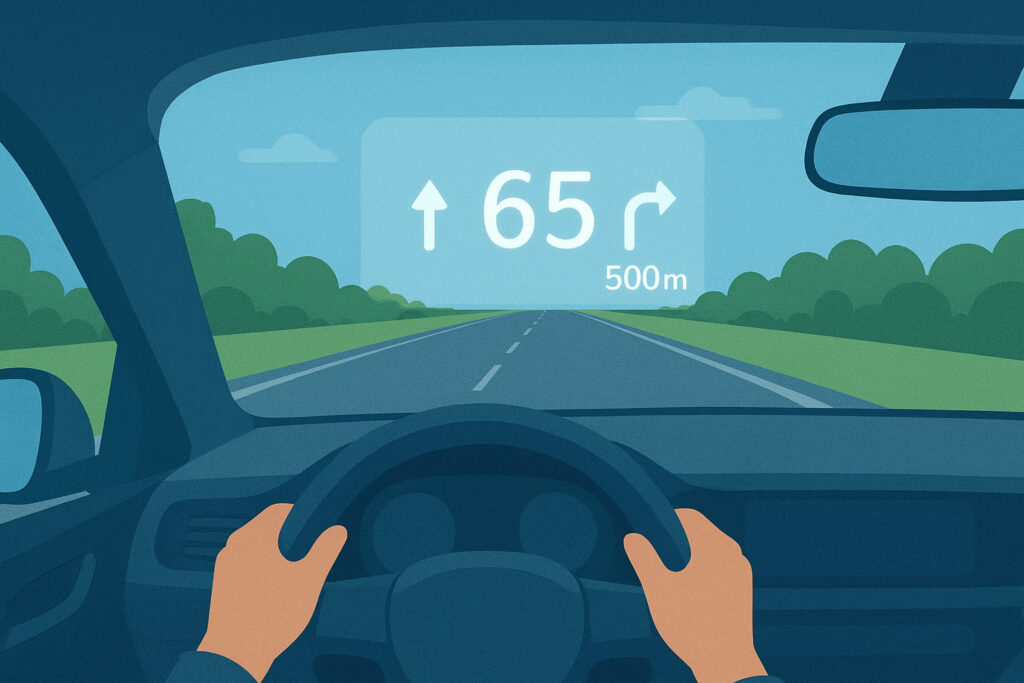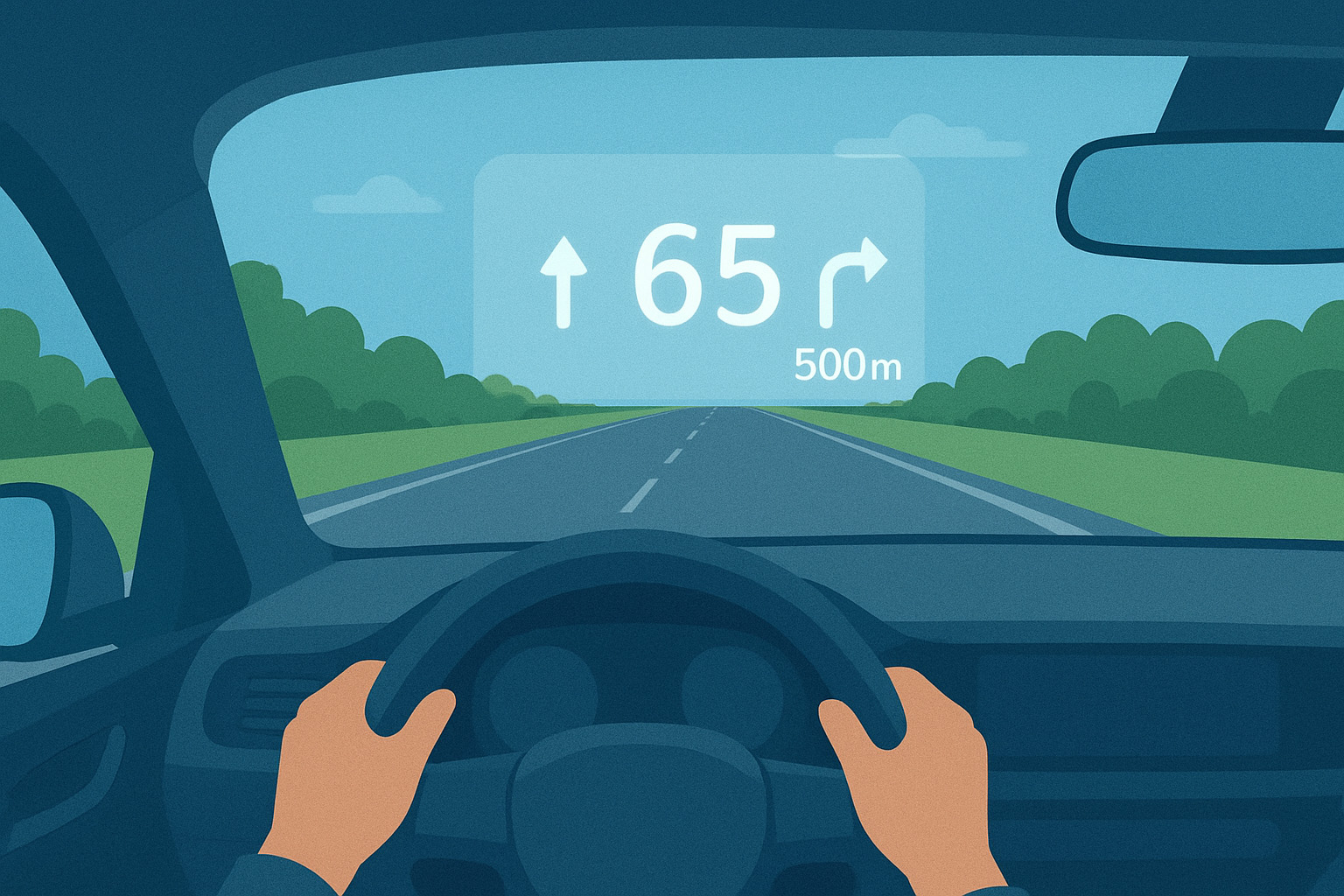Head-up displays (HUDs) have become increasingly popular in modern vehicles, projecting essential information like speed, navigation, and safety alerts directly onto the windshield. While this technology enhances driving convenience and safety, it also changes the game when it comes to windshield replacement. If your vehicle is equipped with a HUD, you can’t just replace the glass with any standard windshield—specific materials and manufacturing processes are required to maintain display clarity and accuracy.
In this article, we’ll explore how HUDs work with windshields, what makes HUD-specific glass different, and the cost and repair considerations that come with it.
What Is a Head-Up Display (HUD) and How Does It Work?
A head-up display projects light from a small projector—typically located on the dashboard—onto the inside surface of the windshield. The windshield then reflects the image back toward the driver at an angle that makes the display appear as if it is floating in the driver’s line of sight.
For this to work properly, the windshield must have special optical properties:
- PVB interlayer: Many HUD windshields use a polyvinyl butyral (PVB) interlayer with wedge-shaped or laminated layers that prevent double images (known as “ghosting”).
- Precise glass thickness: Even minor variations can distort the image.
- Anti-reflective coating: Some HUD windshields include coatings that improve contrast and visibility under bright conditions.
Because of these requirements, a HUD-compatible windshield is not interchangeable with a standard windshield.
HUD Windshields vs. Standard Windshields
| Feature | HUD Windshield | Standard Windshield |
| Optical interlayer | Yes, wedge-shaped or specialized PVB | Standard PVB |
| Image clarity | Optimized for HUD projection | No optimization |
| Replacement cost | Higher (typically 2–3x standard glass) | Lower |
| Calibration needs | Often requires recalibration of ADAS & HUD alignment | May require ADAS recalibration only |
| Availability | Limited to OEM and certified aftermarket | Widely available |
Replacement Costs: What to Expect
Because of the specialized materials and precision manufacturing, HUD windshields cost more than standard ones. On average:
- Standard windshield replacement: $250–$500
- HUD windshield replacement: $800–$2,500+ (depending on make, model, and calibration needs)
Luxury brands like BMW, Audi, and Mercedes-Benz often fall on the higher end, while mainstream vehicles may be more affordable but still significantly pricier than non-HUD windshields.
Calibration and Installation Considerations
Replacing a HUD windshield isn’t just about swapping the glass. Two important steps must be taken:
- HUD Alignment – The projected image must be crisp and properly positioned. If the windshield is misaligned or the wrong type is installed, the display may appear blurry or doubled.
- ADAS Recalibration – Many HUD-equipped vehicles also feature advanced driver-assistance systems (ADAS) like lane departure warnings or adaptive cruise control. Replacing the windshield often requires recalibration of cameras and sensors to restore functionality.
Skipping either step can compromise safety and performance.
Insurance and Coverage
If your vehicle has a HUD, you should verify your insurance coverage for glass replacement. Some policies may only cover standard glass unless HUD glass is specified. Since HUD windshields can be up to three times more expensive, it’s wise to confirm whether your policy includes OEM parts or if aftermarket HUD-compatible options are acceptable.
Tips for HUD Windshield Replacement
- Always specify HUD compatibility: When requesting quotes, mention that your vehicle has a head-up display. This ensures shops price the correct windshield.
- Choose qualified installers: HUD windshields require precise installation and calibration. Look for shops that are trained in both HUD and ADAS systems.
- Compare OEM vs. aftermarket options: Some high-quality aftermarket HUD windshields are available at a lower cost, but not all vehicles have compatible alternatives.
- Don’t delay repairs: Even small chips and cracks can distort HUD images, making them distracting or unreadable. Prompt replacement preserves visibility and safety.
Final Thoughts
Head-up displays bring futuristic convenience to the driving experience, but they also raise the stakes when it comes to windshield replacement. HUD windshields are more advanced, more expensive, and more specialized than standard auto glass. If your vehicle is equipped with one, choosing the right replacement, and a qualified installer, is essential to keep your display sharp and your safety features functioning. (To learn more about HUDs, check out this article)
When shopping for a replacement, always make sure you’re comparing HUD-compatible options, not just standard glass, to avoid costly mistakes down the road.
To make sure you’re getting the right windshield for your HUD-equipped vehicle at a fair price, we recommend using our free quote tool.
In just minutes, you can compare prices from up to three trusted auto glass shops near you, each qualified to properly replace and recalibrate HUD windshields. This way, you’ll save time, money, and ensure your head-up display continues to perform as intended.

To read more, visit blog.glass.net

